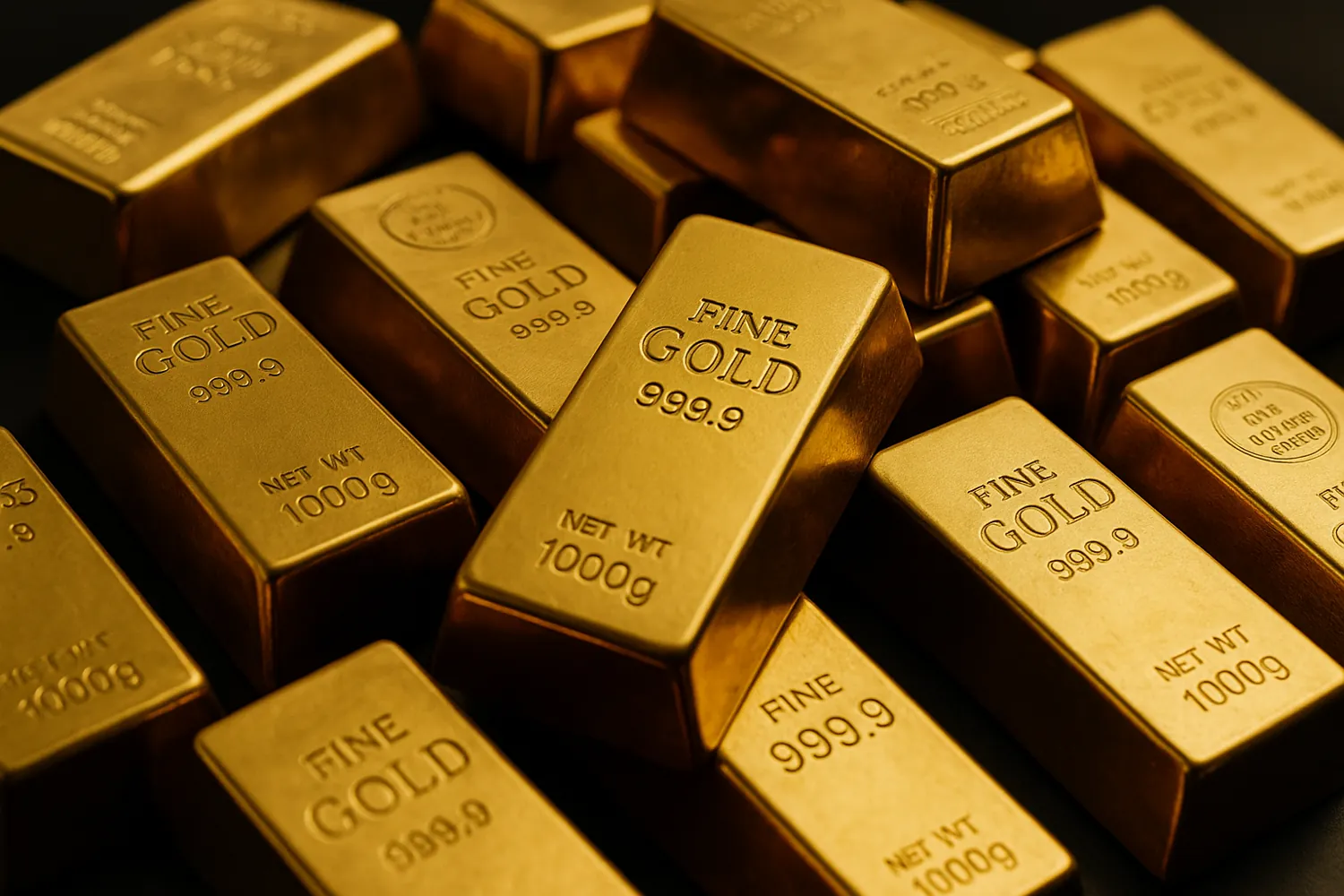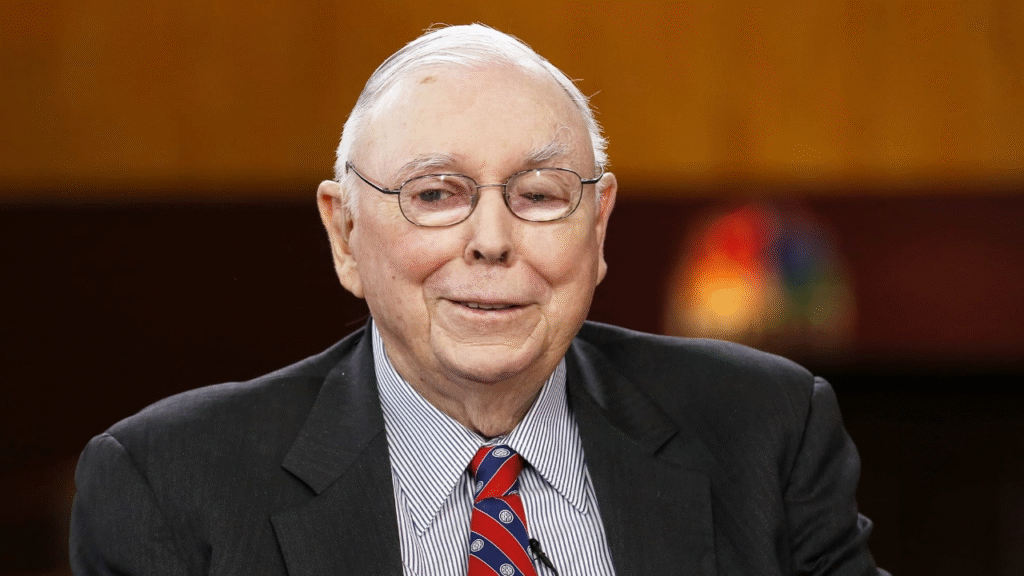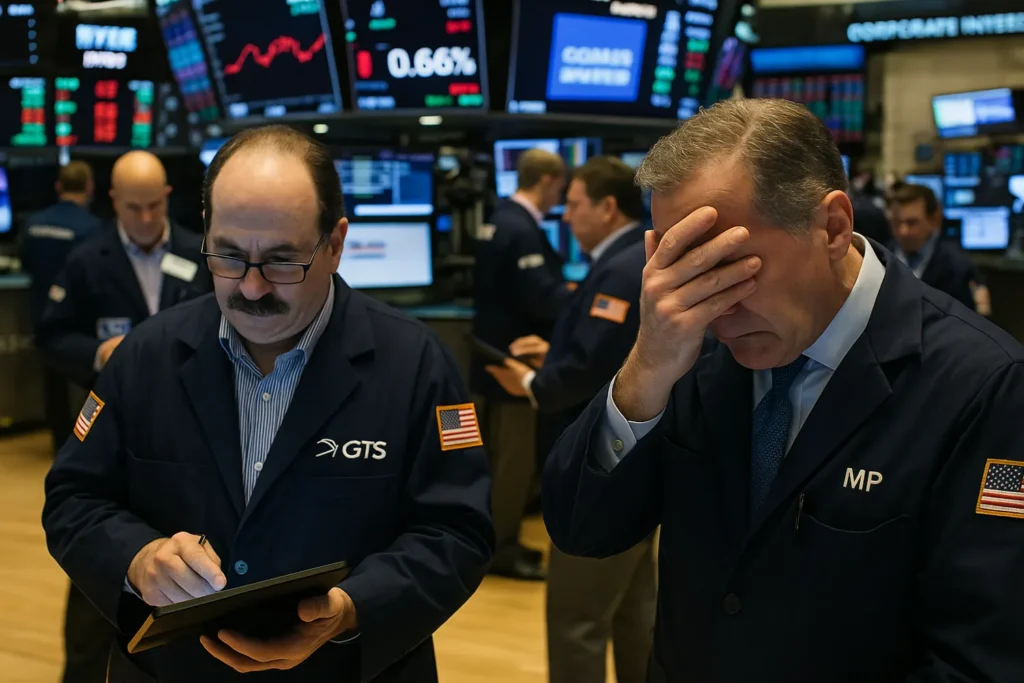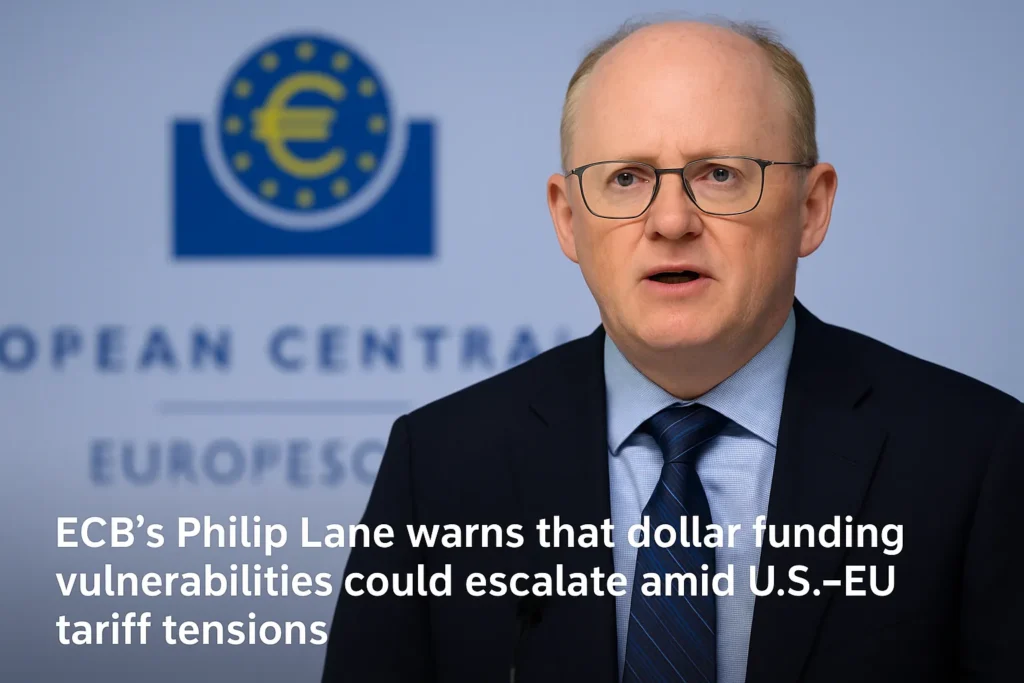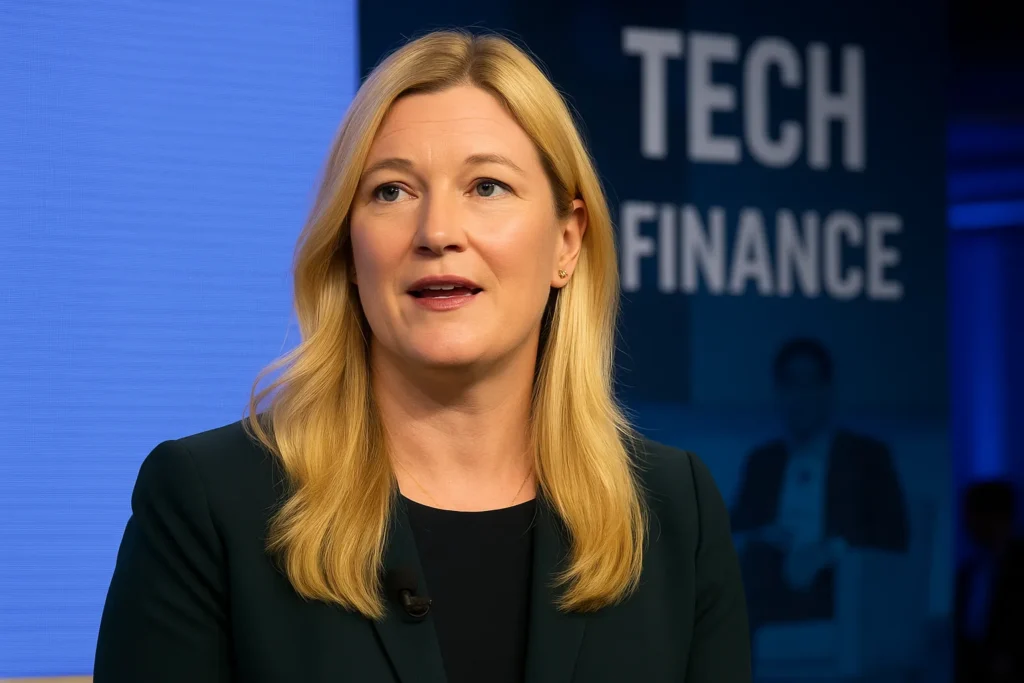After months of relentless ascent, gold prices pull back from their unprecedented high above $4,000 per ounce. The correction — a brief pause in one of the most aggressive rallies of the decade — reveals a world economy gripped by uncertainty, fear, and central banks walking a knife’s edge.
The surge in bullion, up more than 54% this year, is not just a story of inflation hedges or Fed policy — it’s a reflection of the deep mistrust investors now have toward fiat currencies and government stability.
Context: The golden climb that shook markets
For months, gold had been the unstoppable trade. Fueled by geopolitical anxiety, wars in Eastern Europe and the Middle East, and fears of a global slowdown, investors rushed into hard assets as a safe haven.
When the metal broke the symbolic $4,000 barrier, it triggered both euphoria and alarm. Traders cheered, central bankers fretted, and the Federal Reserve — already under fire for policy flip-flops — faced a new paradox: how to cool inflation without freezing liquidity.
Even as the IMF raised the US recession probability to 40%, bond yields fell and the dollar weakened, both of which further propelled gold.
Oppositional Argument: A retreat or a warning?
Mainstream analysts describe this dip as “healthy profit-taking.” But in truth, when gold prices pull back, it’s often a sign of stress, not relief. Investors are not abandoning gold — they’re repositioning, waiting for the next wave of volatility.
The mainstream narrative pretends that this pullback reflects stability returning to markets. Yet there’s nothing stable about an asset that has risen over 50% in a single year while major currencies wobble. The “correction” is cosmetic — the underlying anxiety remains intact.
Gold’s ascent is a mirror of global distrust: distrust in governments, in central banks, in the very idea that monetary policy can contain chaos.
Analytical Breakdown: The forces driving the pullback
Behind the glitter lies arithmetic. The Federal Reserve has signaled another potential rate cut before year-end. Each cut weakens the dollar, making gold — priced in USD — more attractive. Yet traders know that momentum-driven surges eventually invite sharp reversals.
When gold passed $4,000, speculative positions reached record levels. Hedge funds, retail investors, and even some sovereign funds piled in. The recent pullback simply flushed out overleveraged bets.
Still, demand fundamentals remain strong:
- Central banks continue to diversify reserves away from dollars.
- Asian consumers, particularly in India and China, maintain record jewelry purchases.
- ETF inflows remain at decade highs.
The Treasury’s robust $58 billion auction briefly diverted attention, strengthening bonds and prompting portfolio rebalancing. But gold’s core appeal — as protection against systemic failure — has not faded.
Counterarguments
Critics insist gold is a “bubble” inflated by fear. They point to slowing inflation and resilient equity markets as proof that investors are overreacting.
Yet those same voices said the same in 2008 and 2020 — just before financial shocks vindicated the so-called “gold bugs.” The difference now is scale: global debt is 20% higher than pre-pandemic, and monetary tools are nearly exhausted.
Human Perspective: fear wrapped in luxury
In the markets of Dubai, Mumbai, and Shanghai, long queues formed outside jewelry stores after gold touched $4,000. For ordinary buyers, it wasn’t speculation — it was preservation.
A Chinese factory worker interviewed by Reuters said, “I don’t trust the yuan or the stock market anymore. Gold feels real.”
That sentiment spans continents. In the U.S., millennial investors are buying gold coins for the first time. For them, digital wealth — stocks, crypto, NFTs — no longer feels secure.
The gold prices pull back headline masks a deeper social truth: people are retreating into tangible assets, seeking safety in something older than money itself.
Oppositional Argument: What mainstream economists miss
The financial establishment dismisses gold’s rally as irrational exuberance. But what if the irrationality lies elsewhere — in faith that governments can print endlessly without consequence?
Gold’s rise is not rebellion; it’s self-defense. As central banks monetize debt and election cycles weaponize budgets, the yellow metal serves as the last form of silent protest.
The so-called “profit-taking” phase is temporary. In truth, markets are preparing for another round of geopolitical and fiscal instability — conditions under which gold historically thrives.
Analytical Breakdown: Lessons from history
The last time gold surged at this pace was during the late 1970s — another era of political turmoil, stagflation, and public mistrust. Then, as now, central banks underestimated how fast sentiment can shift from confidence to panic.
Today’s situation may be worse. Global debt exceeds $320 trillion. The Fed’s balance sheet, though trimmed, remains double pre-pandemic levels. Inflation is cooling but not dying. And political polarization in the U.S. ensures no consensus on fiscal restraint.
Markets aren’t just pricing in risk — they’re pricing in disbelief.
Counterarguments
Some economists argue gold will retreat once rates stabilize and risk appetite returns. Yet every “stabilization” phase of the past decade has been followed by new shocks — from pandemics to wars to financial cracks.
If anything, the resilience of gold above $3,800 suggests a new floor, not a peak.
Conclusion: gold’s correction is not the end of its story
The correction in gold prices pull back is less a reversal than a recalibration. Investors are taking a breath — not leaving the battlefield. The macro forces driving the rally remain intact: monetary easing, geopolitical tension, and institutional mistrust.
As one London metals analyst put it, “Gold doesn’t rise because the world is good. It rises because the world isn’t.”
Until confidence returns — and that may take years — gold’s shine will outlast every forecast of its decline.
External Links
65 views
